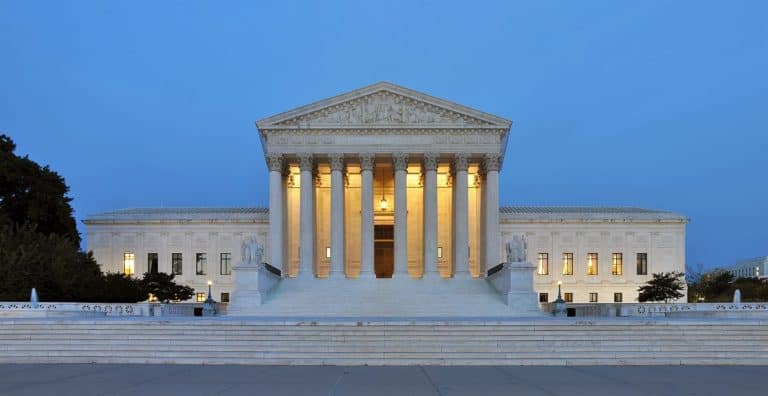
Andrew Strom is a union lawyer based in New York City. He is also an adjunct professor at Brooklyn Law School.
What should the remedy be when your employer threatens to kill your co-worker who started the union organizing drive? Yes, this really happened a few years back, and the NLRB ordered the employer to “cease and desist from threatening to kill its employees because they support the Union,” and it further ordered the employer to post a notice assuring the workers that it would not threaten to kill them.
Fortunately, it is shockingly rare for an employer to threaten to kill its workers for trying to unionize, but Kate Bronfenbrenner has found that it is quite common for employers to threaten workers in other ways, such as threatening to close a facility if the workers unionize. These kinds of threats can be quite effective in defeating a union organizing drive, yet under current Board law, the only remedy is a prospective cease and desist order along with a notice posting. As a result, employers get one free chance to take their best shot at intimidating workers before facing any consequences.
While courts have sometimes struck down the NLRB’s chosen remedy as punitive, a recent D.C. Circuit opinion serves as a reminder that the Board has broad discretion to order employers “to take such affirmative action … as will effectuate the policies of the [NLRA].” In Camelot Terrace Inc. v. NLRB, the court upheld a Board order requiring an employer to reimburse a union’s bargaining expenses where the NLRB finds that the employer has engaged in egregious bad-faith bargaining. The court reasoned that “a more traditional remedy, such as a bargaining order, is of little value if one party can drain another of its resources by bargaining in bad faith and then extracting concessions as the money wanes.” The court further noted that “limiting the remedy to the conventional bargaining order would effectively permit the employer to benefit from its violations of the Act.”
The Board should build on the logic of the Camelot Terrace decision to formulate a more meaningful remedy where an employer egregiously interferes with its workers’ union organizing efforts. If an employer succeeds in stopping, or even delaying, a union organizing drive through its illegal acts, the workers are entitled to compensation for the interference with their rights. But the challenge is how to measure the harm to the workers. One very conservative measure would be to look at the total amount of money the employer has spent on its anti-union campaign. The NLRA is premised on the theory that by organizing, workers increase their bargaining power and they are able to redirect some of the employer’s profits toward higher wages and benefits (or more leisure time). Presumably, when a rational employer decides to spend money fighting unionization, the employer has determined that the amount spent fighting the union drive would be less than the amount of profits that a successful drive would redirect into workers’ pockets. Of course, since an employer will only spend as much money as necessary to defeat the organizing drive, the dollars spent on an anti-union campaign are likely to far understate the expected gains to workers. While this is a very rough measure of the harm to workers, courts have long recognized that damages should be awarded even when the extent of the damages is uncertain, and that it is appropriate to resolve any uncertainty against the wrongdoer.
I’m not aware of any other legal regime where a perpetrator is allowed one free strike. It’s time for the NLRB to impose a remedy for unlawful threats that acknowledges how harmful they can be, and that at least attempts to compensate the victims.






Daily News & Commentary
Start your day with our roundup of the latest labor developments. See all
July 4
The DOL scraps a Biden-era proposed rule to end subminimum wages for disabled workers; millions will lose access to Medicaid and SNAP due to new proof of work requirements; and states step up in the noncompete policy space.
July 3
California compromises with unions on housing; 11th Circuit rules against transgender teacher; Harvard removes hundreds from grad student union.
July 2
Block, Nanda, and Nayak argue that the NLRA is under attack, harming democracy; the EEOC files a motion to dismiss a lawsuit brought by former EEOC Commissioner Jocelyn Samuels; and SEIU Local 1000 strikes an agreement with the State of California to delay the state's return-to-office executive order for state workers.
July 1
In today’s news and commentary, the Department of Labor proposes to roll back minimum wage and overtime protections for home care workers, a federal judge dismissed a lawsuit by public defenders over a union’s Gaza statements, and Philadelphia’s largest municipal union is on strike for first time in nearly 40 years. On Monday, the U.S. […]
June 30
Antidiscrimination scholars question McDonnell Douglas, George Washington University Hospital bargained in bad faith, and NY regulators defend LPA dispensary law.
June 29
In today’s news and commentary, Trump v. CASA restricts nationwide injunctions, a preliminary injunction continues to stop DOL from shutting down Job Corps, and the minimum wage is set to rise in multiple cities and states. On Friday, the Supreme Court held in Trump v. CASA that universal injunctions “likely exceed the equitable authority that […]